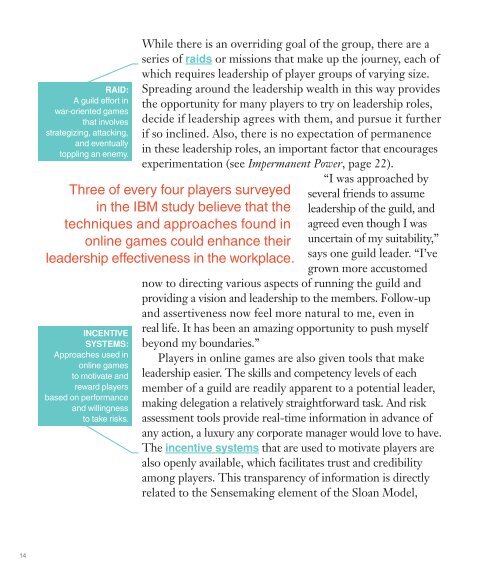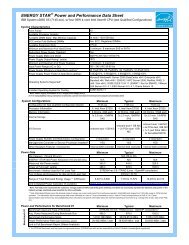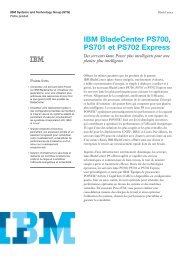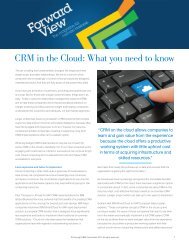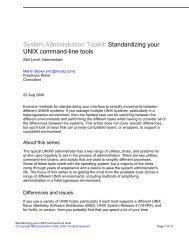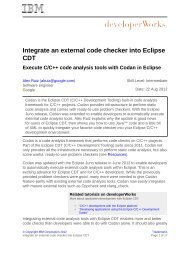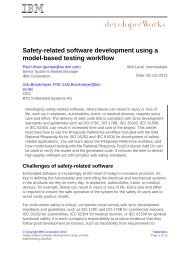Virtual Worlds, Real Leaders: - IBM
Virtual Worlds, Real Leaders: - IBM
Virtual Worlds, Real Leaders: - IBM
Create successful ePaper yourself
Turn your PDF publications into a flip-book with our unique Google optimized e-Paper software.
14<br />
RAID:<br />
A guild effort in<br />
war-oriented games<br />
that involves<br />
strategizing, attacking,<br />
and eventually<br />
toppling an enemy.<br />
While there is an overriding goal of the group, there are a<br />
series of raids or missions that make up the journey, each of<br />
which requires leadership of player groups of varying size.<br />
Spreading around the leadership wealth in this way provides<br />
the opportunity for many players to try on leadership roles,<br />
decide if leadership agrees with them, and pursue it further<br />
if so inclined. Also, there is no expectation of permanence<br />
in these leadership roles, an important factor that encourages<br />
experimentation (see Impermanent Power, page 22).<br />
Three of every four players surveyed<br />
in the <strong>IBM</strong> study believe that the<br />
techniques and approaches found in<br />
online games could enhance their<br />
leadership effectiveness in the workplace .<br />
INCENTIVE<br />
SYSTEMS:<br />
Approaches used in<br />
online games<br />
to motivate and<br />
reward players<br />
based on performance<br />
and willingness<br />
to take risks.<br />
“I was approached by<br />
several friends to assume<br />
leadership of the guild, and<br />
agreed even though I was<br />
uncertain of my suitability,”<br />
says one guild leader. “I’ve<br />
grown more accustomed<br />
now to directing various aspects of running the guild and<br />
providing a vision and leadership to the members. Follow-up<br />
and assertiveness now feel more natural to me, even in<br />
real life. It has been an amazing opportunity to push myself<br />
beyond my boundaries.”<br />
Players in online games are also given tools that make<br />
leadership easier. The skills and competency levels of each<br />
member of a guild are readily apparent to a potential leader,<br />
making delegation a relatively straightforward task. And risk<br />
assessment tools provide real-time information in advance of<br />
any action, a luxury any corporate manager would love to have.<br />
The incentive systems that are used to motivate players are<br />
also openly available, which facilitates trust and credibility<br />
among players. This transparency of information is directly<br />
related to the Sensemaking element of the Sloan Model,


